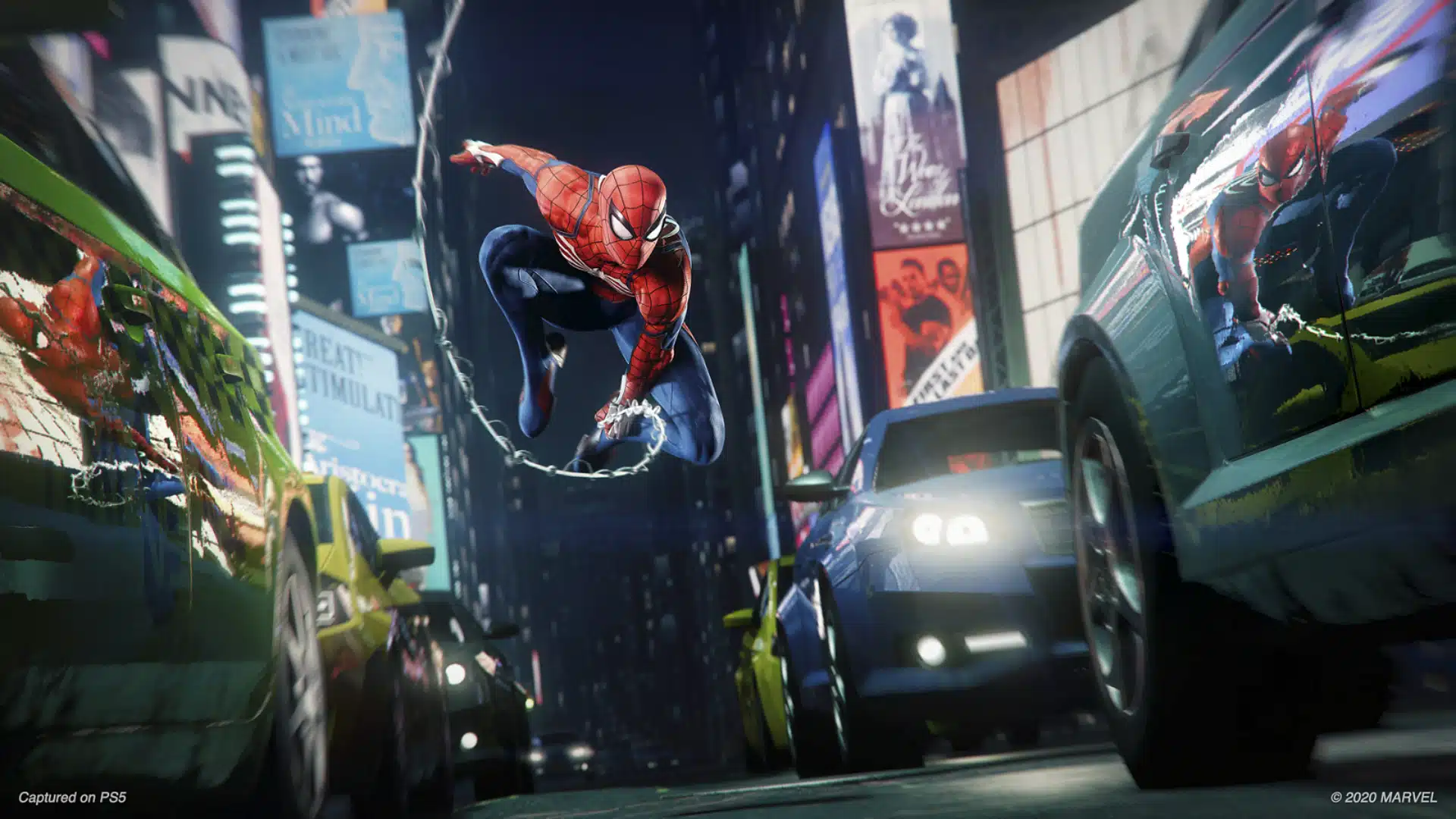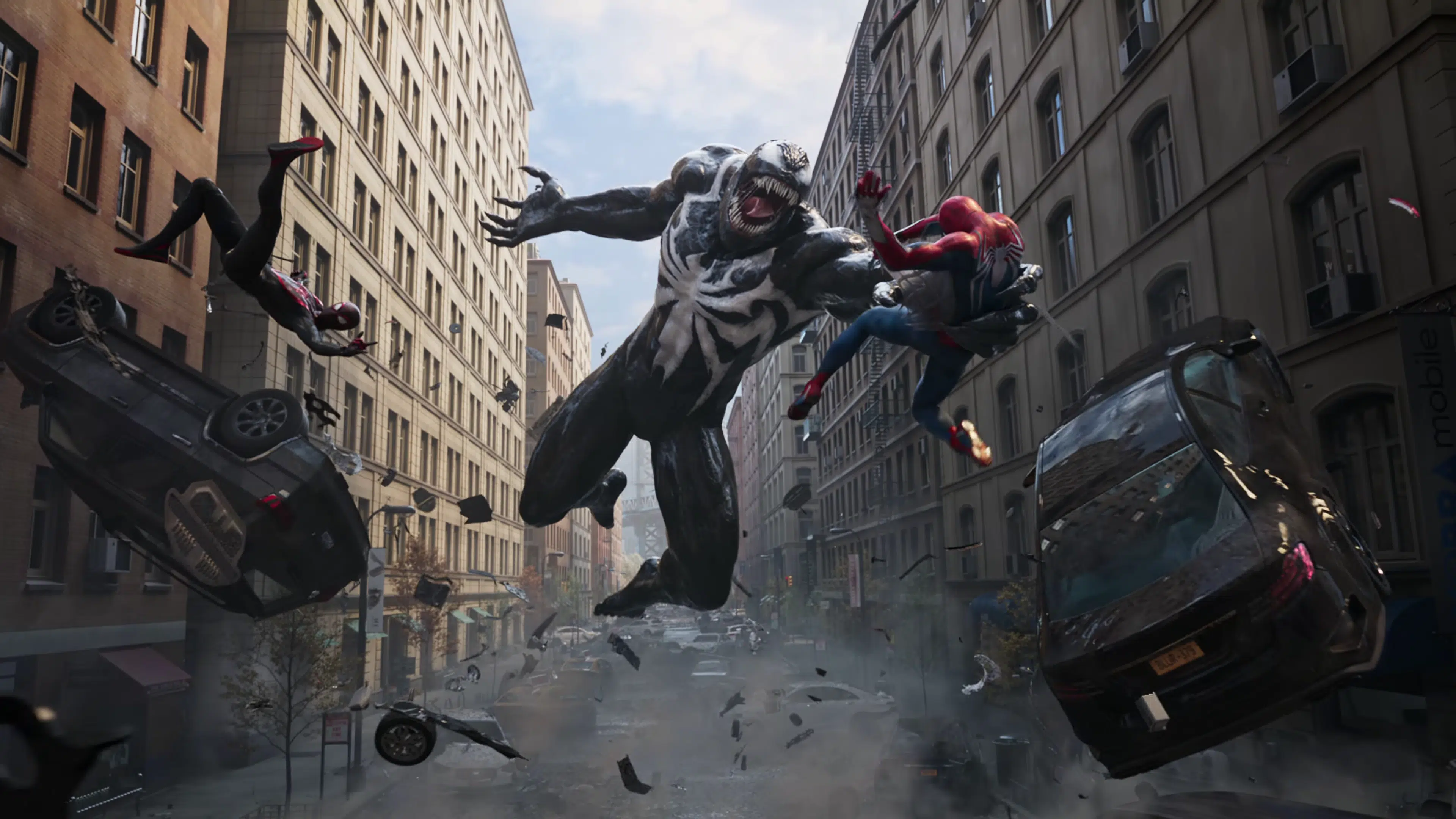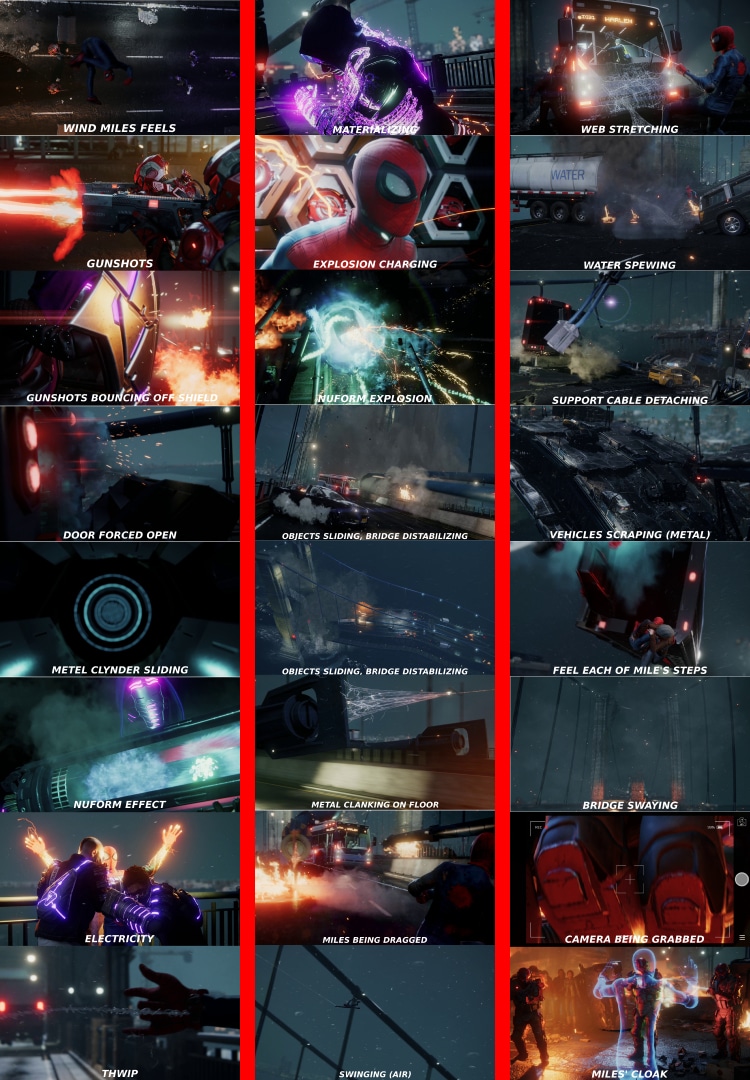When Sony first revealed the PlayStation 5 over two years ago, expectations for the next-gen console were at an all-time high. Coming off a generation where games were starting to show their age, especially in performance, the new hardware promised more power and a blazing-fast SSD to eliminate load times and other generational leaps. However, while the console specs were impressive, what came as a huge surprise was the reveal that the PS5 controller wouldn’t be a new iteration of the fan-favorite DualShock but rather a new controller dubbed the DualSense. It was an odd name at the time, but soon after release, gamers everywhere began to realize the true meaning behind the “Sense” naming, as the controller gave players a new level of immersion with innovative haptic feedback and adaptive triggers.
Many had thought these features would die out like so many other gimmicks before, yet nearly three years after its release, support for its features has gone on strong from both first and third-party studios. And while Astro’s Playroom will remain the definitive showcase of the DualSense, there is another first-party studio that has already released three, and soon a fourth, title this gen that has made good use of it, and that studio is none other than Insomniac Games, who have seemingly become the masters of not just the PS5’s hardware but also the DualSense controller.
Let’s see how the studio has used the DualSense and why that should be one of the many reasons to be excited for the upcoming PS5 exclusive, Marvel’s Spider-Man 2.
Marvel’s Spider-Man Remastered – With Great Power
Having initially played Marvel’s Spider-Man on the PS4, I was in no rush to replay the remastered version when it first launched alongside the PS5 two years ago. However, after playing through Miles Morales recently on the PS5 for the first time, I was intrigued to see how a remastered PS4 title fared on the PS5 with all the features Insomniac advertised. It was (and still is) an impressive remaster of a PS4 title that only got better with post-launch updates that added a ray-trace performance mode and VRR support.

The remastered is absolutely gorgeous, though that should be no surprise given Insomniac’s history of taking advantage of hardware to push visual fidelity. While the PS5 has plenty of untapped power to be showcased, I wanted to divert the attention away from the console itself and look at its fancy new controller, the DualSense.
When Sony first introduced the DualSense, they promised it would be a means to let gamers feel what was happening in a game, therefore offering an experience that was more immersive than their past consoles. How? Well, with haptics and adaptive triggers.
As we saw (or more like heard) in our breakdown of Astro’s Playroom last year, ASOBI demonstrated just how immersive the DualSense can make an experience by fine-tuning haptics so that players could feel and even distinguish certain feedback. For example, when it rained, you could feel droplets of water lightly splash from the haptics. However, when it hailed, while the effect of being able to feel each drop remained, the haptics themselves were “harder” due to the frozen water. Terrain and several other objects and actions also produced unique haptics exclusive to specific responses.
Looking at how traditional rumble works, walking on ice, snow, dirt, water, and grass would feel the same since the motors could only vibrate in a specific way. They could produce patterns and lower and increase their intensity, but they mainly served as a means to give players some form of feedback that wasn’t at all distinguishable from each other.
But when you introduce haptics, you can feel the difference between things like metal and wood, snow and ice, water and fire, dust and wind, basically anything. You can even feel the difference when something is hollow or not if a scene calls for that. This is what makes the DualSense such an amazing controller because despite what many call a gimmick, it truly heightens the level of immersion in a game in the most surprising of ways.
So, looking at Insomniac Games, how is the studio using the controller to make Marvel’s Spider-Man Remastered feel more immersive? Well, give it a listen yourself. I do not recommend watching/listening to the entire thing, only the first four minutes, and I’ll go over why after.
Now, if you watched this video in its entirety or maybe just those first few minutes, you might have realized that many of the haptics sound the same. There’s a reason why I have this video showcased the way it is, because despite Insomniac doing a decent job, I realized that Marvel’s Spider-Man Remastered is rather underwhelming for a game to make use of haptics.
I know, I just “hyped” haptics up, and to start on a bit of a low note after that? There’s a point, trust me.
If you were to go back and replay the video above, you’d notice that a bulk of the haptics revolve around the characters themselves. This is the case for many titles where the haptics are solely tied to the character’s actions. For Spider-Man, these are jumping, swinging, and punching, though those same effects are heard throughout the entire game on sources not even relating to those actions.
Most haptics end up being reused for actions that aren’t remotely similar, contrasting how ASOBI used haptics in Astro’s Playroom. Spider-Man has a charge jump (powering up) you can’t hear in-game, but if you listen closely, the DualSense will emulate a charging sound via its haptics. This same effect is used later in the game during the big villain team-up when Vulture charges at Spider-Man, only to be used again moments later by Mr. Negative when he unleashes his blast attack. It’s also used when Spider-Man is being dragged along the street by Vulture later. I heard that same “powering up” sound used when Spider-Man was simply opening a door and some odd random instances that didn’t make sense to have it.
Going back to the scene with all the villains beating on Spider-Man, you can hear Spider-Man’s jumping and punching haptics being reused multiple times as feedback for the villains. Rhino’s footsteps, for example, are used when Spider-Man hits an enemy, only at a slightly higher intensity.
Here’s a sample of that scene. We recommend you use headphones if you’re viewing this on mobile. You’ll notice many of the haptics are very much the same as the ones heard in the video above.
See what I mean?
Most boss fights are like this in their haptics, making them feel “lackluster” because outside of Spider-Man, there’s almost no feedback aside from the punches’ land, which is reused for other effects. Punching and being hit by Rhino should “feel” different than hitting someone like Mr. Negative since it’s metal versus a human body. What’s funny is that the jetpack enemies had more “varied” haptics than the bosses themselves.
The environment lacks, too, with many instances throughout the game having no haptic effects outside of explosions, and even those are misses in some scenes.
To be clear, the purpose of pointing this out wasn’t to nitpick or point out flaws, but instead, I wanted to show you how Insomniac’s first hands at the DualSense turned out. Marvel’s Spider-Man Remastered is impressive for many reasons, and being a port of a game built initially for the PS4 with the upgrades mainly focused on visuals and performance, I think the lack of varied haptics is more forgiving. Plus, it’s a great example to look back on to show how the studio has evolved its approach to haptics. Most of you probably wouldn’t notice this, which could be a good thing, but it’s also a bummer that most of you wouldn’t realize just how far Insomniac has come with their haptic implementation since the Spidey PS5 remaster. I’d go as far as to compare it to a generational graphical leap. Yes, honestly, it’s that big of a jump.
From a haptics standpoint, I like to view Marvel’s Spider-Man Remastered more as what the studio could do at a glance because when you look at Marvel’s Spider-Man: Miles Morales, you can see how much more the studio focused on the DualSense when having the feature in mind from the get-go.
So, how big of a leap does Insomniac’s experience with the controller jump in their next title? Well, quite a lot, as the studio realized in the standalone follow-up that haptics could bring more immersion than what they offered in the Remastered, giving us a true sense of feel.
Marvel’s Spider-Man Miles Morales – The Power of the Sun in the Palm of My Hand
Believe it or not, Marvel’s Spider-Man Miles Morales’ haptics are drastically improved over the Spider-Man Remastered. While players will feel almost no difference in feedback when playing as Miles and swinging across New York, given that he does practically play the same as Peter’s Spider-Man, it’s what’s going on around in the world that Insomniac has decided to focus on in this standalone experience.
Immediately when you start the game, you’ll notice the haptics kick in as you can feel the train Miles is on moving, the text messages he receives, and the vibration of a vehicle driving by as he walks down a busy street. If you noticed, none of those listed are related to the actions performed by Miles, but rather the environment itself, something that was lacking nearly entirely in the remaster.
What’s crazy here is that the bridge scene alone probably features more unique and varied haptics than the entirety of the Spider-Man Remastered. There’s so much going on in that scene alone, and having looked back on it, I’d say it’s possibly my favorite scene when it comes to showing off haptic features.
A breakdown of some of the haptics featured in that video.
Other improvements include feeling objects off-screen, such as the helicopter in the opening act or when Peter propels upside-down to meet Miles. Before you even see it, you’ll feel it first. the remaster had some of this, too, but not to the degree of Miles Morales.
These small details truly make the DualSense shine, elevating the level of immersion to new heights. Miles Morales is loaded with these small haptic details and improvements, which stretch out to other areas such as boss fights and even improved character haptics.
As mentioned, the remaster didn’t have much going on during boss fights, but Miles Morales quickly addressed it, giving Rhino and other bosses unique haptics. During the Rhino chase, you’ll feel the explosion he causes and the things he breaks, and as you fight him, you can feel his steps and his charge attacks, as well as him picking up and throwing objects. He had a light amount of feedback in the Remastered, which didn’t differ from the standard grunt enemy, but in Miles Morales, Rhino’s haptics have been designed specifically for him and only him.
A comparison video featuring snippets of fights from both games and other changes.
There’s something else that I noticed that Miles Morales introduces that is even more noticeable than it is in Ratchet and Clank: Rift Apart, and that’s being able to feel haptics from more than one source in a given scene. If you pay close attention to the opening scene of Miles Morales, you can feel the brakes slowing the train down and the slight bumps on the train tracks. Later, when Miles meets up with Peter, the aircraft transporting Rhino can be felt, and as both Peter and Miles begin to follow it, you can feel every time they shoot their web and simultaneously feel the blades of the aircraft spin.
It’s even used in combat, which Insomniac pointed out in a PlayStation Blog post during the release of Miles Morales.
“The haptic feedback precision allows us to do all sorts of new things. In Marvel’s Spider-Man: Miles Morales, we’ll be hinting to players which direction attacks are coming from by providing haptic feedback from the appropriate direction on the DualSense wireless controller.”
This isn’t something you would notice unless you paid massive attention to it or, in this case, had it pointed out, but now that you know it, you can understand how much more advanced haptics can offer over traditional rumble motors. You aren’t going to get multiple sources playing over each other like that or a sense of direction as you would with haptic feedback.
There are also two other haptic effects that Insomniac added to Miles Morales that are mostly absent from the Remastered. One is around the distance of an object, which we’ll dive deeper into in the next section with Ratchet and Clank: Rift Apart. The other is echoing. When you hear a sound, depending on the space you’re in, sometimes these sounds will produce an echo. Shout hello across a valley, and it’ll say hello back to you, but the reality is that’s your voice hitting a surface and bouncing back to you.
Insomniac has emulated this effect throughout Miles Morales with the use of haptics. The steel cargo carrying Rhino at the start of the game is one of these very examples, as whenever it bounces or gets hit, it produces a metallic echo that can be felt through the haptics. Here’s how it sounds.
Feel what you see, and Insomniac Games has undoubtedly delivered on that, fully utilizing the PS5 and its DualSense controller. The latter is something I don’t think Insomniac Games gets enough credit for. However, many acknowledged that in their next title, Ratchet and Clank: Rift Apart.
Ratchet and Clank: Rift Apart – A Beautiful Pairing of Haptics and 3D Audio
Ratchet and Clank: Rift Apart is one of the best examples of what the PS5 is capable of when you build a game from the ground up exclusively. Visually, it’s damn near the quality of a Pixar movie, and as far as making full use of features such as the SSD, 3D audio, haptics, adaptive, and even ray tracing, it truly is one of the most next-gen games out there to date.
But sticking to the subject of haptic feedback, Ratchet and Clank: Rift Apart is a beautiful showcase of the controller, producing even more unique haptics throughout the campaign than the two previous Spider-Man games. From feeling the different types of surfaces you walk on, the rumbling of a flying car driving by, loud music at a club, to even the subtle soft reloading of a gun, which by the way, are all unique for each weapon. If there is a game (outside of Astro’s Playroom) to impress someone with haptic feedback, look no further than Ratchet and Clank: Rift Apart.
As impressive as the application of haptics is in Ratchet and Clank: Rift Apart, I bet there’s one thing you didn’t notice (unless you watched the video above) during a playthrough, and that’s how Insomniac has taken distance and directional feedback even further with this title.
Sony has been very vocal over the last two years about the power of 3D audio. We don’t blame them because when a game utilizes the custom audio engine in the PS5, it can produce some unique and memorable moments. Resident Evil Village is one of those games that makes perfect use of 3D audio, as are the many first-party games that Sony has released, such as Returnal, God of War Ragnarok, and so many more. 3D audio lets you hear where sound is coming from and how it reacts dynamically in the environment.
But what if I were to tell you that Insomniac Games not only took full advantage of 3D audio in all their games but also made it so haptics would adjust to those instances where they shift direction and distances to provide even more of an immersive haptic experience?
To explain what I mean, think of sound and how we can hear and feel the direction it comes from. Now picture a road with a car traveling from one end to the other. With you positioned in the middle and the car traveling down the road, you would hear it getting closer as its engine would become louder.
By the time the car had passed, the sound would shift from one ear to the other, with the volume of the vehicle’s engine decreasing as it traveled away from you. This is known as the Doppler effect, which NASA explains better:
As any object moves through the air, the air near the object is disturbed. The disturbances are transmitted through the air at a distinct speed called the speed of sound. Sound is a sensation created in the human brain in response to small pressure fluctuations in the air. Sound moves through the air as a series of waves. When the waves pass our ears, a sound is detected. The distance between any two waves is called the wavelength and the time interval between waves passing is called the frequency . The speed of sound relates the wavelength and the frequency; high frequency implies short wavelength and low frequency implies a long wavelength. The brain associates a certain musical pitch with each frequency; the higher the frequency, the higher the pitch. Similarly, shorter wavelengths produce higher pitches. The speed of transmission of the sound remains a constant regardless of the frequency or the wavelength. The speed of sound only depends on the state of the air (or gas) not on the characteristics of the generating source.
Because the speed of sound depends only on the state of the gas, some interesting physical phenomena occur when a sound source moves through a uniform gas. You can study some of these phenomena by using the interactive sound wave simulator. As the source moves it continues to generate sound waves which move at the speed of sound. Since the source is moving slower than the speed of sound, the waves move out away from the source. Upstream (in the direction of the motion), the waves bunch up and the wavelength decreases. Downstream, the waves spread out and the wavelength increases. The sound that our ear detects will change in pitch as the object passes. This change in pitch is called a doppler effect.
This is something you think little about nowadays, so I could understand PS5 owners not noticing it when it comes to the haptic feedback since those are generally tied to the character’s action, which makes it harder to showcase this effect.
I love how Insomniac Games have taken advantage of the haptic features. They’re uniquely built for almost every action in Rift Apart, and the studio also takes things a step further by emulating the feeling of “distance” (also featured in Miles Morales) of specific actions. Again, the video above showcases all the sounds you could hear from the haptics, but I’ve spliced up a small clip below to show you that the Doppler effect does come into play. Do note that you won’t be able to hear the direction of the feedback due to the nature of the vibrations playing at a low-level decibel and our audio device only handling a single channel of capture. That prompted me to fill the left or right audio tracks with whichever channel was the loudest to have a higher volume. You may still find that you’ll need to crank up your system (especially mobile users) to hear this.
This may seem small, but as someone who enjoys looking at things from a technical standpoint, I appreciate the studio’s work tackling haptic feedback. Again, while the video doesn’t show it, playing it for yourself, you’ll not only be able to feel the different levels of intensity of the vibrations but also the different directions it’s coming from. As the two critters in the video travel from one side to the other, this is also reflected on the DualSense, with the haptics switching from the left to the right side of the controller and vice versa.
You can feel footsteps as they get closer and closer and as they get further and further away. As far as I’m aware, Insomniac was the first to do something like that, though that doesn’t mean there aren’t other titles to do this since.
The significant thing that sticks out for me the most for haptics when it comes to Insomniac Games and Sony’s first-party titles, in general, is how they’re not just using the in-game audio and throwing them in as the haptics output. Look at Rift Apart; what you hear in-game is not always the same as what you would feel and hear from the haptics. That was something many caught on fast when they realized the Pixelizer gun played a tune using only the haptic motors.
When you think of it, that means that someone (or more) is sitting there and looking at how to implement haptics in these games. They could take the easy way and, as mentioned, feed what you hear in-game out to the motors. But they didn’t, and because they’re putting so much focus and care, they can make these games feel even more immersive than they already are. Shout out to that person or group doing this; you’re doing a fantastic job!
This brings us to our final game.
Marvel’s Spider-Man 2 – Be Greater. Together.

With everything shown here, there’s no denying that Insomniac Games has become the master of the PS5, not just with its hardware but also with its DualSense controller, adding to the reasons why you should be excited about Marvel’s Spider-Man 2. Of course, I’m sure many of you have other reasons to be excited about it. I know I do, as I instantly fell in love with the first game when it was released on the PS4 and could not wait to see where the series would go. Then the PS5 dropped, and little did I know just how revolutionary its controller would be, so much so that I look forward to seeing what every game can offer for it.
It’s often used to hype players up and, at times, a marketing gimmick, but Insomniac isn’t about being a gimmick; they’re about proving that things work if you put enough time and effort into something.
With Marvel’s Spider-Man 2 launching as a full-fledged PS5 exclusive, it’ll be interesting to see just how far the studio will manage to push the hardware. But it’s also the haptics that I believe will end up being among the highlights of the title. No doubt the studio will do some exciting things with them, given how varied they already are in Ratchet and Clank Rift Apart and the two previous Spider-Man games.
Luckily, we won’t have very long to wait as Marvel’s Spider-Man 2 is due in a few short weeks. The studio has even talked about using haptics, giving us this small tease from a recent PlayStation blog post, confirming that unique haptics are tied to the black suit and Lizard.
“A massive bell tolls, sending impactful, reverberating ripples through the DualSense controller haptics. The resonant haptic sensation sells the bell’s disruptive effect on the twitching Black Suit. Cutscenes with the massive stampeding Lizard are also accented by intense haptic pulses, emulating the nerve-jangling might of the mutating Super Villain.”
Yeah, I’m excited, and I cannot wait to get my hands on Marvel’s Spider-Man 2 when it launches exclusively for the PS5 on October 25.


I’ve got the platinum trophy for Spiderman on PS4, i was in no rush to play the PS5 next gen upgrade until reading this article.
Thanks for reading 🙂
The Remaster and Miles Morales don’t have the best haptic support. Spider-Man 2 should hopefully be a big improvement